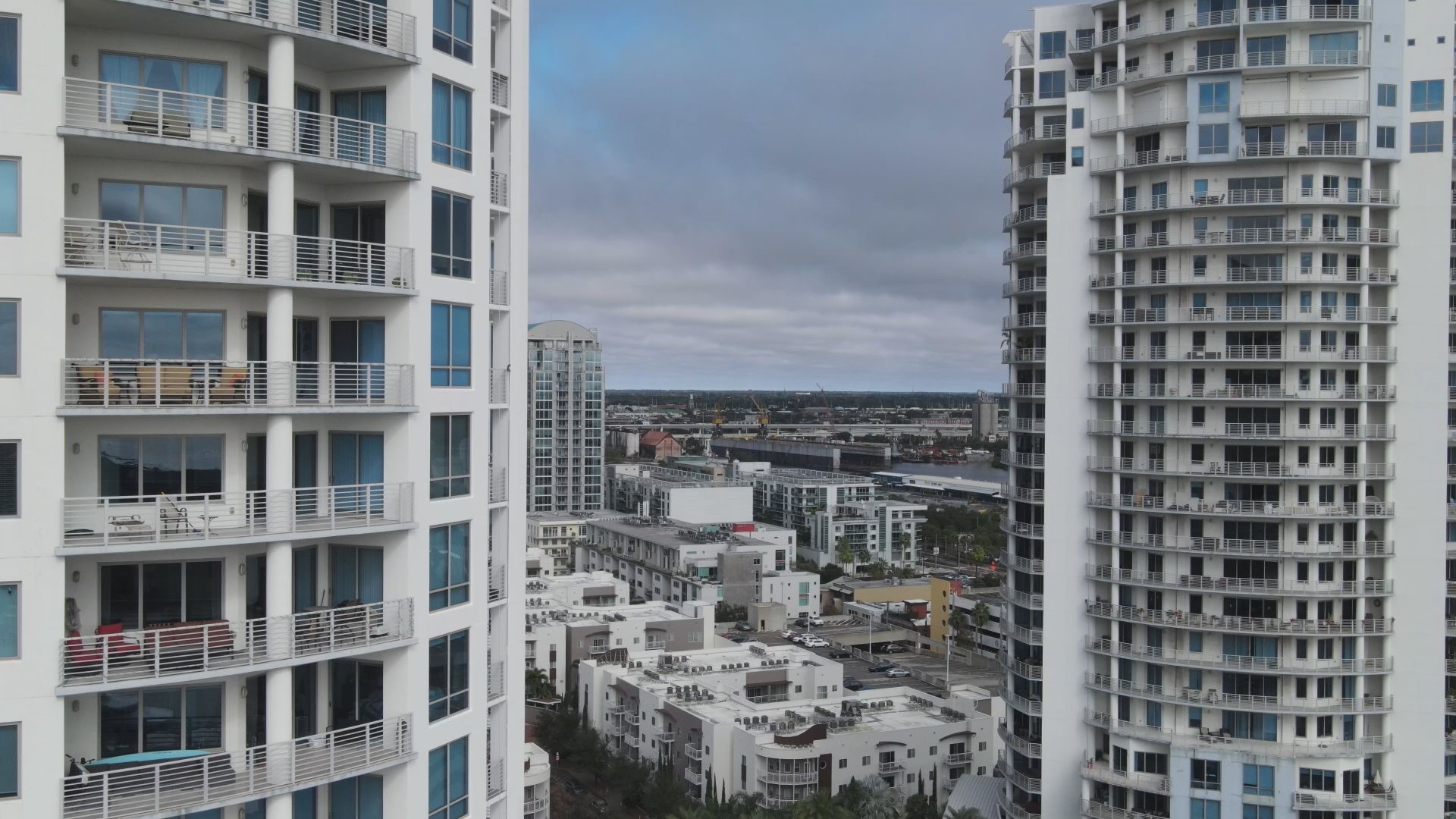TAMPA -- As the city pushes forth with redevelopment plans meant to shift the focus of downtown toward the waterfront, the face of Tampa is constantly changing, and it’s happening right before our eyes.
New people, new construction for homes and offices – there’s a radical shift taking place, and although the cranes and bulldozers seemed to pop up overnight, the foundation for Tampa’s renaissance was laid years ago, largely with Mayor Bob Buckhorn’s InVision Tampa plan.
“Five years from now, certainly 10 years from now. You're not going to recognize this place. It has already been transformed. You can feel it. You can see it in people's sense of pride, their sense of ownership, their Tampa swagger,” said Mayor Buckhorn.
InVision Tampa is a sweeping reinvestment plan that places heavy emphasis on the city’s urban core, making it a more walkable and livable place to be.
“People don't want to live 50 miles away. Particularly with gas prices today, it's expensive to commute. Young people in particular, they want to be around each other. They want to be in an urban environment that's hip and cool and diverse,” said Buckhorn. “You can't do that in the suburbs. You can only do that in the urban areas.”
A major part of InVision Tampa includes the West River Master Plan, a strategy for redeveloping 120 acres of West Tampa between the Hillsborough River, Rome Ave, I-275 and Columbus Drive.
“It's the biggest effort the city has ever undertaken,” said Mayor Buckhorn. “A portion of it will take a very dangerous, dilapidated and antiquated public housing project and replace it. and to give those residents an opportunity to have a better quality of life than they enjoy currently. It will create a development that is focused on the waterfront that is mixed-use, that is activating an area that has long been abandoned, and I think will change the face of West Tampa in a positive way.”
However, some West Tampa natives fear gentrification.
“There are people of color who will benefit from this as we know,” said Dr. Cheryl Rodriguez, professor at the University of South Florida. “But there are many more people of color--black people, Hispanic people and others, who will be disenfranchised in many different ways, who won't find adequate housing, who won't be able to rebuild their lives, who will be pushed into neighborhoods that are perpetually poor, with schools that are perpetually poor.”
Much of the area the city wants to redevelop has been home to a large concentration of the city’s black population. Several thousand lived in the now vacant North Boulevard and Mary Bethune public housing units. Those residents were moved to clear the way for a mixed-income development. Housing officials say they will be welcome to return once the development is complete, but they also admitted that previous relocations showed less than 30 percent actually return.
“They move where they want to move, their kids are in various schools and that kind of thing, and they get situated, and they become happy in the communities they’re in, so they decide not to move back,” said Jerome Ryans, CEO of the Tampa Housing Authority.
But some West Tampa natives like Andre Hill challenge that narrative.
“They said, ‘well you will have an option to come back,’ but also there’s a catch to that. There’s a small print. That if there are [criminal] charges, if they don’t understand the system, how to get around those rules and regulations or to apply for assistance, then in most cases, housing and the developers are counting on only 30 percent of them returning. And they’re banking on that so that they can bring in more market-value housing and less subsidized housing.”
City leaders insist that is not the case.
“We don't exclude anybody if they choose to come back into what will be the West River project,” said Mayor Buckhorn. “We really want to create a mixed-use environment where you can't tell the difference between public and market rate housing.”
It’s a feature Mayor Buckhorn and the housing authority feel strongly about. Yet, natives like Hill don’t quite see it that way.
“Black people will not be a part of the equation. They will be moved out into the suburbs, moved out into the University of South Florida area that was designated a suitcase city, and there’s no economic system, and they’re being pushed further and further out,” he said.
Data shows there is some truth to that claim. Data from Hillsborough County shows most people who left North Boulevard Homes moved into East Tampa and north toward the USF area into neighborhoods that were just as poor as the ones they left.
But it’s not just those in public housing who fear gentrification. The city’s commitment to redevelopment was a catalyst for private investors to flood the West Tampa area.
“What they're saying is: we're changing the neighborhood and making it more attractive to live, but it's all about the dollar. It's all about what they're going to make off of it. So they have an influence,” said resident Ron Pressley.
The division along racial lines is clear. Many, but not all, African Americans in West Tampa say they’re starting to feel squeezed out. Some welcome the change, with the hope the history and culture of the area remains.
“Let there always be a West Tampa,” said James Tokley, poet laureate of Tampa. “It is a legacy of America, and we should never lose it.”
Emerald Morrow is a reporter with 10News WTSP. Like her on Facebook and follow her on Twitter. You can also email her at emorrow@wtsp.com.


